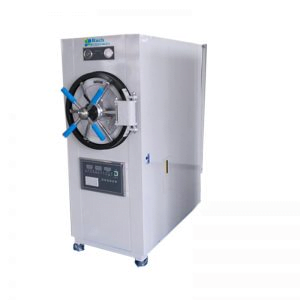Horizontal Autoclave Rectangular
Roch Mechatronics Inc. horizontal rectangular autoclave has an inner chamber of S Steel, Boiler, Lid, and Jacket all made of 304 grade stainless Steel, outer chamber of thick gauge mild steel.
For controlling the sterilization cycle, a three-way valve or a multiport valve made of S.S. is provided. It is supplied complete with a vacuum breaker, water level indicator, steam trap, and automatic pressure control switch. The whole unit is mounted on a robust tubular stand. It is available in the following standard sizes. Operable on 3 Phases, 440 Volts A.C. Supply. Single Phase optional on request.
Frequently Asked Questions (FAQ)
A horizontal autoclave is a type of sterilization equipment used in laboratories, clinics, and industrial settings to sterilize various instruments, materials, and media. Unlike vertical autoclaves, it has a rectangular design and loads items horizontally.
A horizontal autoclave operates by subjecting the contents to high-pressure steam, effectively killing or deactivating microorganisms, bacteria, and spores. The autoclave reaches and maintains a set temperature and pressure for a specified duration to ensure thorough sterilization.
Horizontal autoclaves are versatile and are used for sterilizing equipment like glassware, surgical instruments, laboratory media, liquids, and more. They are essential in research, healthcare, and pharmaceutical industries.
Horizontal autoclaves are preferred when the shape or size of items to be sterilized doesn’t fit well in a vertical autoclave. Their rectangular design allows for better space utilization and easier loading and unloading of larger or irregularly shaped items.
Ensure your autoclave has safety features like pressure relief valves, over-temperature protection, and a door-locking mechanism. These features prevent accidents and ensure safe operation.
The duration of a sterilization cycle varies depending on the load, size, and type of items being sterilized. On average, cycles can range from 15 minutes to several hours, including heating, sterilization, and cooling phases.
In case of malfunction or errors, refer to the user manual for troubleshooting guidance. If the issue persists, contact the manufacturer’s customer support or a certified service technician for assistance.

